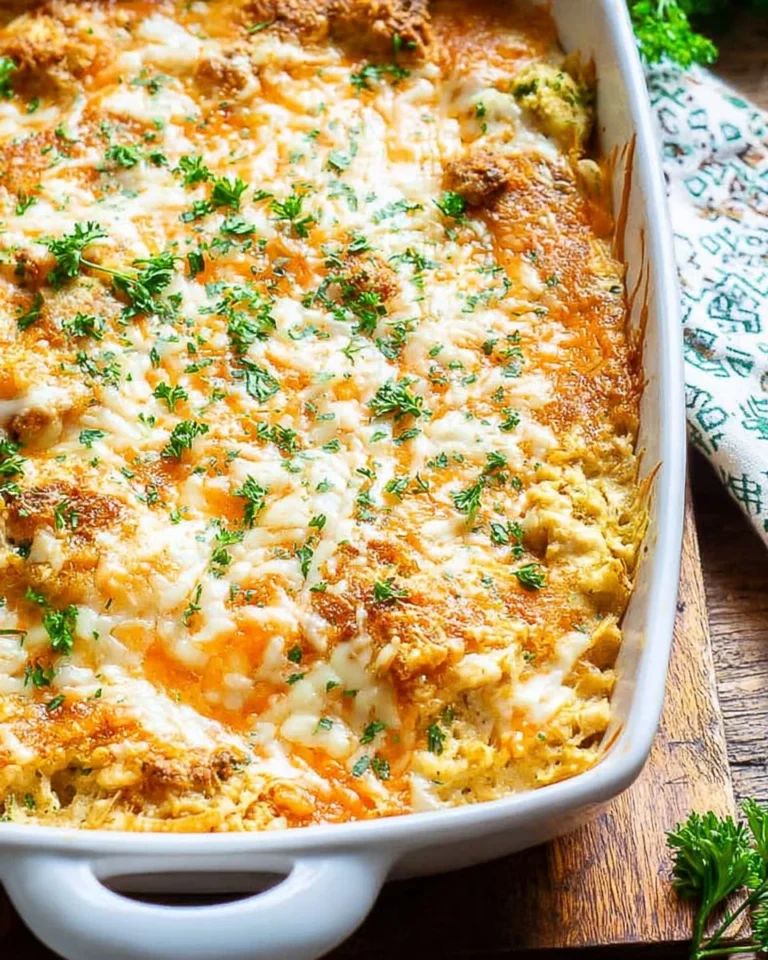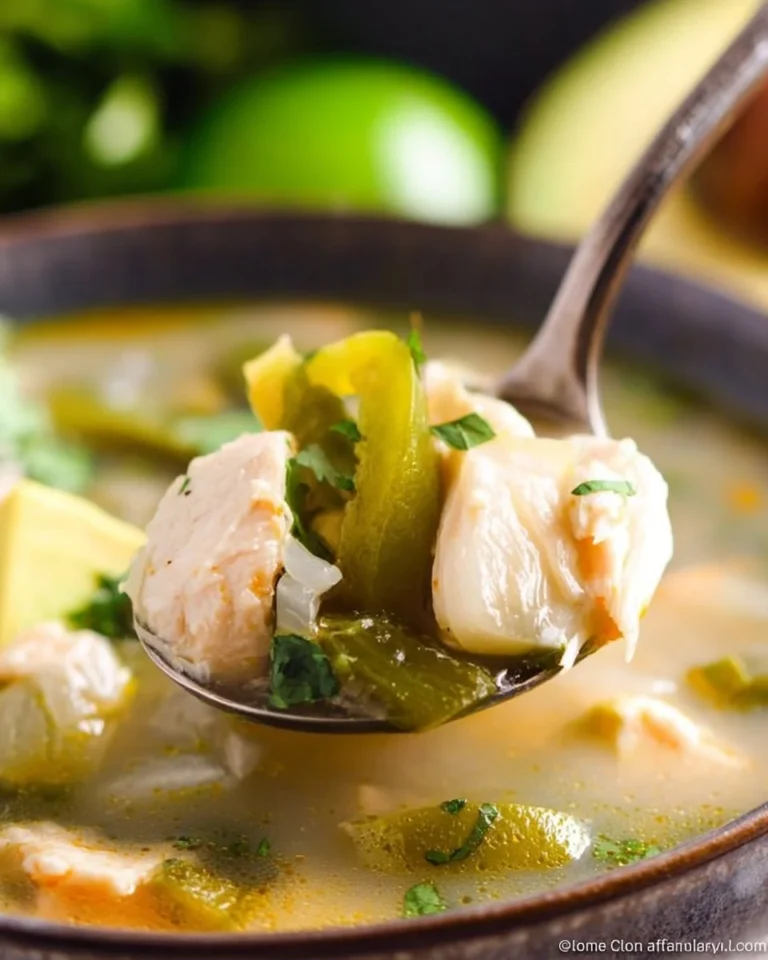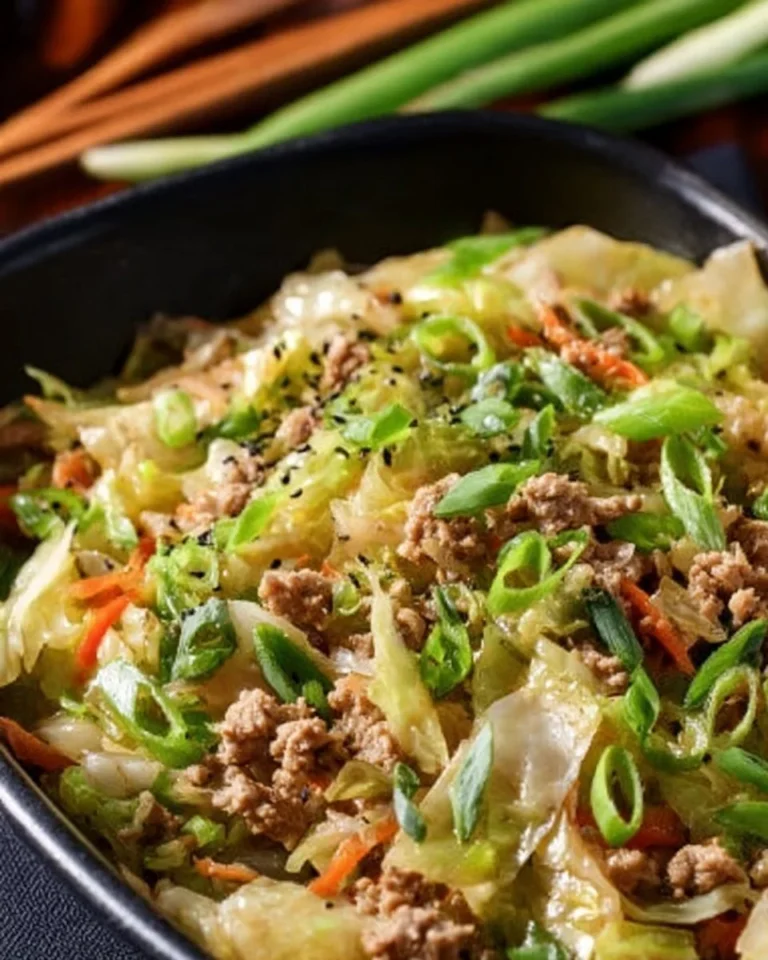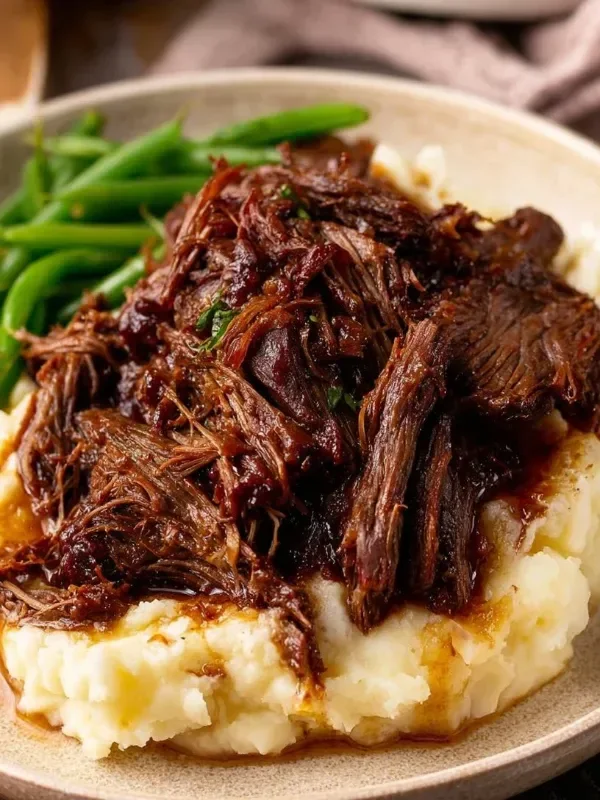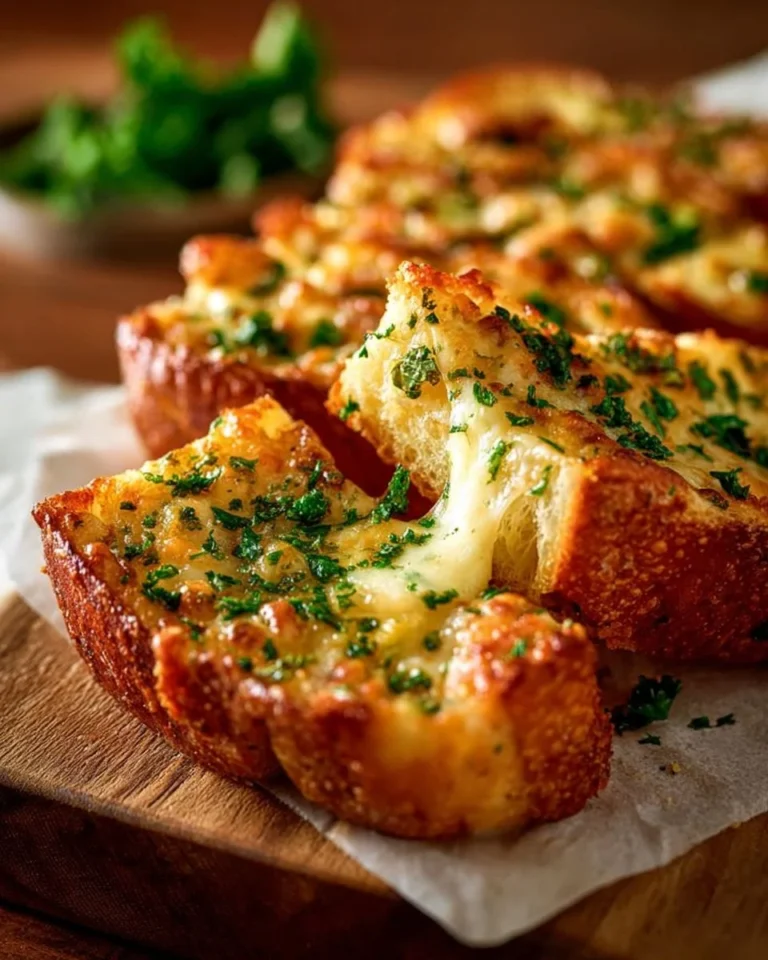Slow-Cooked Goat Goulash
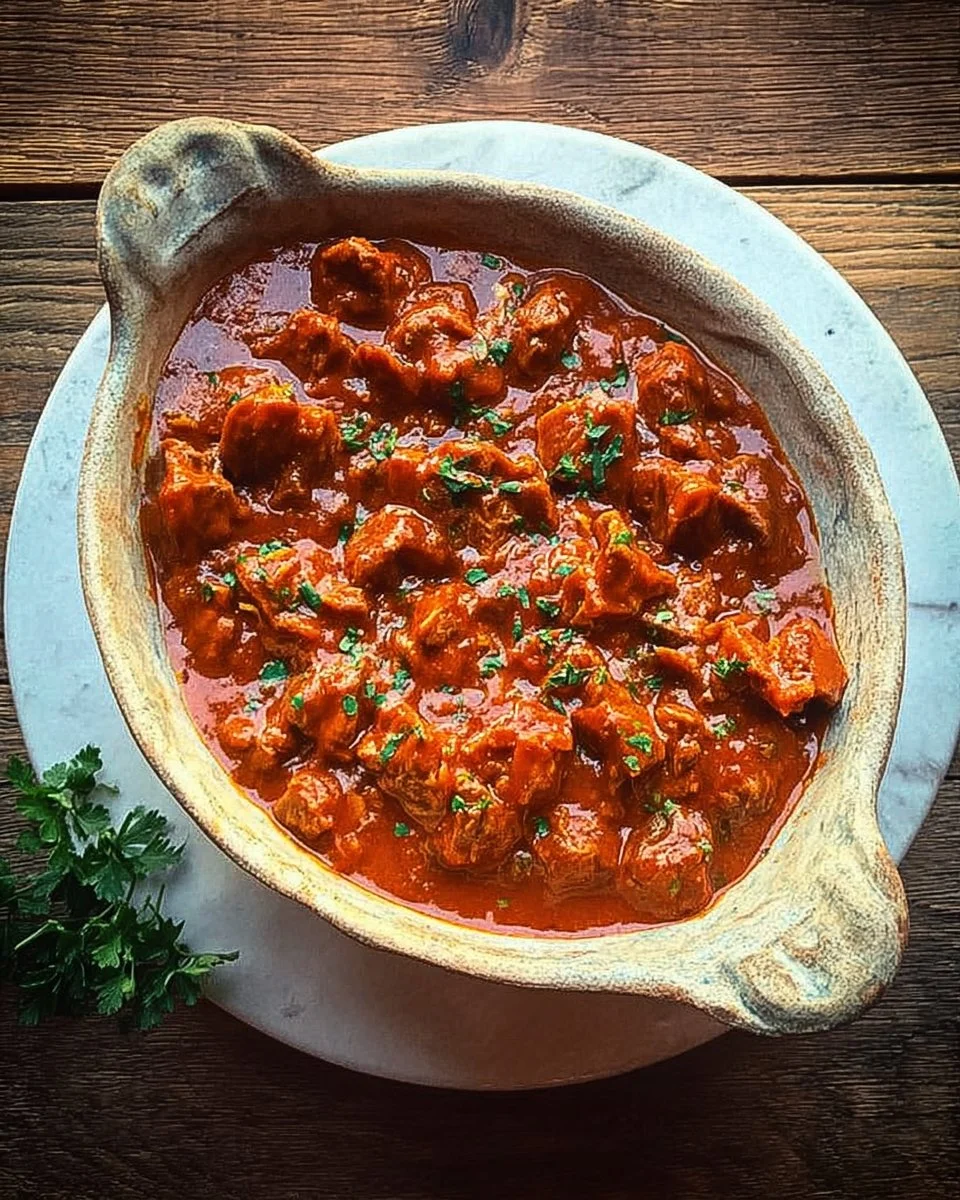
Indulging in Slow-Cooked Goat Goulash
As I slowly stirred the ingredients in my kitchen, the vibrant colors and rich aromas of the slow-cooked goat goulash filled my home with a sense of comfort and anticipation. This dish has an incredible ability to transform humble ingredients into a hearty meal that warms both the body and soul. Perfect for a cozy family dinner or a gathering with friends, goat goulash melds together tender meat and a medley of spices to create a rustic dish that’s sure to impress.
Why you’ll love this dish
So, why exactly should you whip up this goat goulash? First and foremost, it’s the ultimate comfort food. With slow cooking, the toughest cuts of goat become meltingly tender, and the flavors develop beautifully over time. Moreover, this recipe is incredibly versatile; you can serve it with bread, rice, or even mashed potatoes—making it an adaptable choice for any occasion. Given its rich, smoky flavor from the paprika and the health benefits of goat meat—which is leaner than beef—it’s a wholesome meal that the whole family will enjoy.
"This goulash was a revelation! The goat was tender and the spices created such depth. It’s become a family favorite!" – Happy Home Cook
Preparing Slow-Cooked Goat Goulash
Crafting this delicious goulash is as straightforward as it is rewarding. You’ll start by sautéing your vegetables, followed by browning the goat, and then it’s all about letting those flavors fuse during a long, slow cook. The process is uncomplicated, making it great for home cooks of any skill level. Here is how it all comes together.
What you’ll need

To make this mouthwatering slow-cooked goat goulash, gather the following ingredients:
- 1 large brown onion, sliced
- 1 large red pepper (or 2 small), sliced
- 3 cloves garlic, minced
- 1.5 tbsp plain flour
- 2 tbsp olive oil
- 800g diced goat
- 2 tbsp sweet paprika
- 2 tbsp smoked paprika
- 2 bay leaves
- 400g tin diced tomatoes
- 375ml (1.5 cups) beef stock
- Salt, to taste
Feel free to experiment with some of the ingredients based on available pantry items, such as substituting the beef stock with chicken stock for a different flavor profile.
Step-by-step instructions
- Preheat your oven to 150°C (300°F).
- Heat the olive oil in a large ovenproof casserole dish over medium heat. Once hot, add the sliced onion and red pepper. Sauté for about 8-10 minutes until softened and translucent.
- Stir in the minced garlic and cook for another minute until fragrant.
- Add the diced goat to the pot, browning it for 5-6 minutes.
- Sprinkle the flour over the goat and vegetables, followed by the sweet and smoked paprika. Stir to coat everything well.
- Pour in the diced tomatoes and beef stock, then add the bay leaves. Season with a pinch of salt and stir gently to combine.
- Bring the mixture to a gentle simmer. Once simmering, cover the casserole with a lid and transfer to the oven. Cook for 2 1/2 hours, or until the goat is tender and the sauce has thickened.
- Before serving, remember to remove the bay leaves.
Best ways to enjoy it
Serving this goat goulash is an opportunity to get creative! Try ladling it over a bed of fluffy rice or alongside a thick slice of crusty bread for dipping. You can also enhance your meal with a side of roasted vegetables or a fresh salad. A dollop of sour cream on top adds a delightful creaminess that perfectly balances the spices, while fresh parsley can brighten up the plate.
Storage and reheating tips
If you have leftovers (which I highly recommend), you can store them in an airtight container in the fridge for up to 3 days. To reheat, simply warm it gently on the stove over low heat until heated through. You can also freeze the goulash for up to 3 months. Just be sure to let it cool completely before transferring it to a freezer-safe container to avoid freezer burn.
Helpful cooking tips
To ensure your goat goulash turns out perfectly every time, here are some extra tips:
- Don’t rush the browning stage—searing the goat locks in flavors and juices.
- Use high-quality spices, especially the paprika; fresh spices offer better depth of flavor.
- Consider creating a roux beforehand by cooking the flour with the oil to create a thicker sauce if desired.
Creative twists
There are plenty of ways to put a unique spin on this classic dish:
- For a Mediterranean flair, try adding olives and capers to your goulash.
- If you’re feeling adventurous, introduce heat by adding chili flakes or fresh chilies.
- Explore global flavors by incorporating coconut milk for a creamier texture, or attempt a curry twist with curry powder.
Common questions
What’s the prep and cooking time for slow-cooked goat goulash?
Prep time is around 15-20 minutes, while cooking takes about 2.5 hours in the oven.
Can I use another meat in this recipe?
Absolutely! You can substitute goat with lamb or even beef, but cooking times may vary based on the meat you choose.
How long can I store leftovers?
Store in the fridge for up to 3 days or freeze for up to 3 months. Just remember to let it cool completely before freezing!
With its rich flavors and comforting nature, Slow-Cooked Goat Goulash is bound to become a staple in your kitchen. Following these instructions leads to a dish that not only nourishes but also delights everyone around the table. Enjoy your culinary adventure!
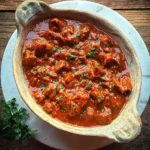
Slow-Cooked Goat Goulash
Ingredients
Method
- Preheat your oven to 150°C (300°F).
- Heat the olive oil in a large ovenproof casserole dish over medium heat.
- Once hot, add the sliced onion and red pepper. Sauté for about 8-10 minutes until softened and translucent.
- Stir in the minced garlic and cook for another minute until fragrant.
- Add the diced goat to the pot, browning it for 5-6 minutes.
- Sprinkle the flour over the goat and vegetables, followed by the sweet and smoked paprika. Stir to coat everything well.
- Pour in the diced tomatoes and beef stock, then add the bay leaves. Season with a pinch of salt and stir gently to combine.
- Bring the mixture to a gentle simmer. Once simmering, cover the casserole with a lid and transfer to the oven.
- Cook for 2 1/2 hours, or until the goat is tender and the sauce has thickened.
- Before serving, remember to remove the bay leaves.

